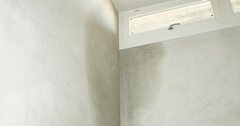
Water damage can strike unexpectedly, wreaking havoc on homes and businesses alike. Whether caused by burst pipes, leaking appliances, or severe weather events, water intrusion can lead to extensive damage, mold growth, and compromised structural integrity if not addressed promptly and effectively. In water damage restoration, professional moisture testing plays a pivotal role in assessing the extent of the damage, guiding restoration efforts, and ensuring thorough drying and mitigation. In this blog post, we'll delve into the importance of professional moisture testing in water damage restoration and its critical role in restoring properties to pre-loss condition.
Understanding Moisture's Impact on Water Damage
Moisture is a silent intruder capable of penetrating building materials, seeping into hidden spaces, and lingering long after visible water has been removed. Left unchecked, excess moisture can foster mold growth, compromise indoor air quality, and weaken the structural components of the building. Moreover, moisture pockets can remain undetected beneath surfaces, leading to ongoing damage and potential health hazards for occupants. Professional moisture testing provides invaluable insights into the presence and extent of moisture infiltration, guiding restoration professionals in their efforts to effectively mitigate damage and prevent long-term consequences.
Comprehensive Assessment of Water Damage
Professional moisture testing is an essential component of the initial assessment phase in water damage restoration. Trained technicians utilize a variety of specialized tools and techniques to detect and measure moisture levels in affected areas, including moisture meters, infrared cameras, and thermo-hygrometers. These tools enable professionals to identify moisture sources, assess the extent of water damage, and determine the most appropriate course of action for restoration. By conducting thorough moisture testing, restoration teams can develop comprehensive restoration plans tailored to the specific needs of each property, ensuring efficient and effective mitigation of water damage.
Preventing Mold Growth and Secondary Damage
One of the primary concerns following water damage is the risk of mold growth and secondary damage to the property. Mold thrives in moist environments, proliferating rapidly in areas with elevated humidity levels and organic material. Professional moisture testing allows restoration professionals to identify moisture-prone areas, assess the risk of mold growth, and implement targeted drying strategies to prevent mold colonization. By addressing moisture issues promptly and thoroughly, restoration teams can mitigate the risk of mold-related health problems, structural deterioration, and costly remediation efforts down the line.
Ensuring Thorough Drying and Dehumidification
Effective drying and dehumidification are critical components of water damage restoration, aimed at removing excess moisture from the affected environment and promoting rapid drying of building materials. Professional moisture testing helps restoration teams monitor moisture levels throughout the restoration process, ensuring that all affected areas are thoroughly dried and restored to pre-loss conditions. By using advanced moisture detection equipment, technicians can identify hidden moisture pockets, monitor drying progress, and adjust drying equipment as needed to optimize drying efficiency and minimize drying times.
Validating the Success of Restoration Efforts
In addition to guiding initial assessment and mitigation efforts, professional moisture testing plays a crucial role in validating the success of restoration efforts and ensuring that properties are safe, dry, and free of moisture-related issues. After completing restoration activities, technicians conduct post-restoration moisture testing to verify that moisture levels have returned to acceptable levels and that the risk of mold growth and secondary damage has been effectively mitigated. By providing objective data and documentation of moisture levels, post-restoration moisture testing offers peace of mind to property owners and assurance that restoration goals have been achieved.
In conclusion, professional moisture testing is an indispensable tool in water damage restoration, providing essential insights into the extent of water damage, guiding mitigation efforts, and ensuring thorough drying and dehumidification of affected properties. Property owners can expedite the restoration process, minimize damage, and safeguard their properties against mold growth and secondary damage by partnering with certified restoration professionals equipped with advanced moisture detection technology and expertise. When it comes to water damage restoration, investing in professional moisture testing is a crucial step toward achieving successful restoration outcomes and restoring properties to their pre-loss condition.
